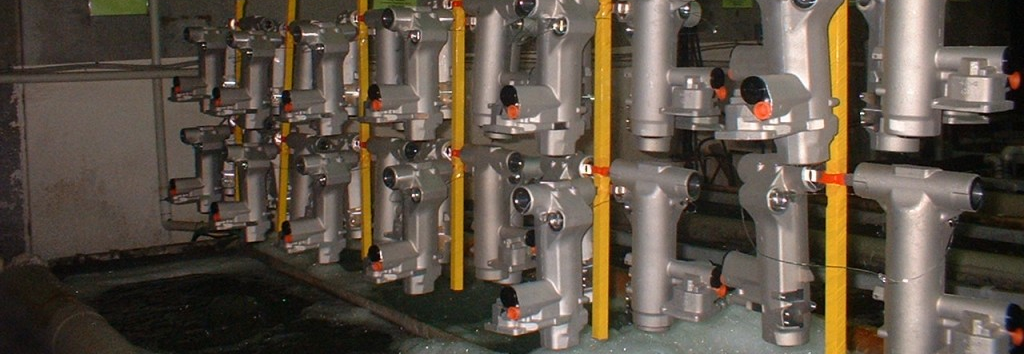Cleaning
Good cleaning of the aluminum before anodizing is essential to achieve an attractive finish. Cleaning is usually done in a non-etching alkaline detergent. This process removes any light oils and contaminants on the aluminum surface that could interfere with subsequent etching and anodizing.
Etching
Alkaline etching is typically done in a sodium hydroxide solution. Etching attacks the raw aluminum surface and different results can be achieved depending on the timing of the etching. On precision parts, etching is kept to a minimum, just enough to remove any natural oxide on the surface. On non-precision parts, etching may be longer to remove minor scratches. For architectural extrusions, acid etching is done to achieve a matte finish.
Acid Desmutting
Etching leaves a film of ‘smut’ on the aluminum. The grey to black smut is the insoluble alloy residual when the aluminum is etched away. This smut is most commonly removed in a nitric acid solution leaving a primed surface ready for anodizing.
Anodizing
The most prevalent anodizing is done with sulphuric acid. Like a giant electrochemical cell, the aluminum to be anodized is the anode in a bath of sulphuric acid. A high-voltage direct current is applied and the surface of the aluminum is converted to aluminum oxide, also called the anodic film. The thickness and density of the anodic film depends on the current density, time, temperature, and concentration of the electrolyte during anodizing.
Colouring
Newly formed anodic film is usually clear and very porous – it is very sensitive to absorbing colour pigments. Many decorative colours, such as red, blue, gold, and black can be attained by immersing the anodized parts in a dye solution. For architectural applications, electrolytic colouring is done by passing an AC current through the anodized parts while immersed in a bath of metal salts. The metal salts are deposited in the pores of the anodic film with the colour becoming darker as more salts are deposited. Bronze is the most common architectural anodized colour – bronze coluring ranges from champagne, light, medium, dark, to black.
Sealing
To prevent the colour from leaching out and fading over time and to avoid problems of the porous anodic film absorbing impurities, such as fingerprints – the final step of the anodizing process is sealing. There are many ways to seal anodized aluminum. In general, the anodized part is immersed in a solution where a chemical plug is deposited into the pores of anodic film.

